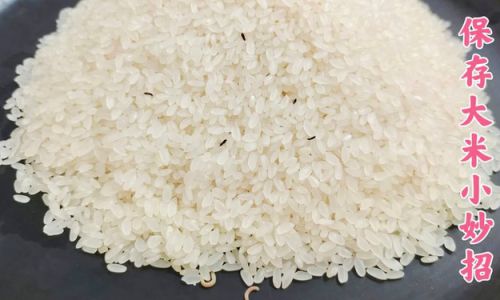Table of content
Rice, a dietary staple for billions worldwide, is prized for its versatility, affordability, and shelf life. However, improper storage can lead to spoilage, insect infestations, or rancidity, particularly in varieties like brown rice that contain natural oils. Preserving rice does not require complex equipment or specialized knowledge. By adhering to a few straightforward principles—such as controlling moisture, temperature, and exposure to pests—you can extend its freshness for months or even years. This article explores the simplest, most practical methods to store rice, ensuring it remains safe, flavorful, and ready for use.
Understanding Rice Spoilage: Enemies of Grain Quality
Before diving into preservation techniques, it is crucial to identify the factors that compromise rice quality. The primary adversaries are moisture, oxygen, heat, and pests.

- Moisture: Even trace amounts can trigger mold growth or fermentation, rendering rice inedible.
- Oxygen: Accelerates oxidation, causing fats in rice (especially brown rice) to turn rancid.
- Heat: Speeds up chemical reactions that degrade nutrients and texture.
- Pests: Weevils, moths, and beetles lay eggs in rice, leading to infestations if storage is inadequate.
By neutralizing these threats, you create an environment where rice retains its quality indefinitely.
The Foundation: Airtight Containers
The simplest and most critical step in rice preservation is using airtight containers. These barriers prevent moisture and oxygen from interacting with the grains while blocking pests.
Choosing the Right Container
- Glass Jars: Ideal for their impermeability to gases and moisture. Mason jars or repurposed pasta sauce jars with rubber-sealed lids work well.
- Plastic Containers: Opt for food-grade, BPA-free options. Ensure they have tight-fitting lids. Avoid thin, flimsy containers prone to cracking.
- Metal Tins: Stainless steel or tin-plated containers offer durability and pest resistance. Ensure they are lined to prevent corrosion.
- Mylar Bags: For bulk storage, mylar bags with oxygen absorbers create a near-perfect vacuum, eliminating oxygen and moisture.
Preparation and Placement
- Clean Containers Thoroughly: Wash with warm, soapy water and dry completely to avoid bacterial growth.
- Fill Properly: Avoid overfilling; leave 1–2 inches of space to prevent spillage when sealing.
- Store in a Cool, Dark Place: A pantry, cupboard, or basement away from sunlight and appliances generating heat (e.g., refrigerators, ovens) is ideal.
Temperature Control: The Role of Cool Storage
Temperature fluctuations degrade rice quality. The goal is to slow chemical reactions and pest activity.
Room Temperature Storage
- Best For: Short-term use (6–12 months).
- Conditions: Maintain a stable temperature between 50°F (10°C) and 70°F (21°C). Avoid attics or garages prone to extreme heat or cold.
Refrigeration
- When to Use: If your pantry exceeds 75°F (24°C) or humidity is above 60%.
- Method: Seal rice in airtight containers to prevent moisture absorption from the fridge. Use within 6 months.
Freezing
- Best For: Long-term preservation (1–2 years for white rice; 6–12 months for brown rice).
- Method:
- Place rice in freezer-safe, airtight bags or containers.
- Remove excess air to prevent freezer burn.
- Thaw at room temperature before use.
- Caution: Freezing does not kill pest eggs; infested rice should be frozen first for 72 hours to eliminate larvae, then stored.
Natural Pest Deterrents: Simple and Safe Solutions
Insects are a common nuisance in rice storage. Chemical pesticides are unnecessary; natural alternatives suffice.
Bay Leaves
- How to Use: Place 3–4 dried bay leaves per gallon of rice. Their aromatic oils repel weevils and moths.
- Bonus: Adds a subtle herbal scent without altering taste.
Cloves or Black Peppercorns
- Method: Scatter 1–2 teaspoons of whole cloves or peppercorns in the container.
- Effectiveness: Strong scents disrupt pests’ sensory receptors.
Garlic
- Preparation: Peel 2–3 garlic cloves and bury them deep within the rice.
- Note: Remove garlic after 1–2 months to prevent sprouting.
Pre-Storage Preparation: Cleaning and Inspection
A few minutes of prep work can prevent headaches later.

Sifting and Sorting
- Remove Debris: Use a fine-mesh sieve to eliminate stones, chaff, or broken grains, which harbor pests.
- Discard Infested Grains: If you spot weevils or larvae, freeze the rice for 72 hours to kill eggs before storage.
Drying (If Necessary)
- For Damp Rice: Spread grains on a baking sheet and dry in a 150°F (65°C) oven for 10–15 minutes. Cool completely before storing.
Shelf Life: Maximizing Longevity
Rice type and storage method determine shelf life:
| Rice Type | Room Temperature | Refrigerator | Freezer |
|---|---|---|---|
| White Rice | 2–3 years | 4–5 years | Indefinite |
| Brown Rice | 3–6 months | 6–12 months | 12–18 months |
| Wild Rice | 6–12 months | 1–2 years | 2–3 years |
- Brown Rice: The high oil content in the bran layer makes it prone to rancidity. Freezing is recommended for long-term storage.
- Parboiled Rice: Processed to remove surface starches, offering a longer shelf life than regular white rice.
Avoiding Common Mistakes
Even simple methods can fail if done incorrectly.
Using Plastic Bags
- Risk: Flimsy grocery bags allow pests and moisture to penetrate.
- Solution: Upgrade to reusable silicone bags or airtight containers.
Ignoring Humidity
- Risk: High humidity (above 60%) encourages mold.
- Solution: Use a dehumidifier in storage areas or include silica gel packets in containers.
Storing Near Strong Odors
- Risk: Rice absorbs scents from onions, garlic, or spices.
- Solution: Seal rice separately from aromatic foods.
Beyond the Basics: Advanced Tips for Enthusiasts
While the above methods are sufficient for most households, consider these enhancements for optimal results:
Oxygen Absorbers
- How to Use: Add a 500cc oxygen absorber packet to each gallon of rice in mylar bags.
- Benefit: Eliminates oxygen, preventing rancidity and pest survival.
Vacuum Sealing
- Tools: Use a vacuum sealer to remove air from bags before storage.
- Ideal For: Small batches or splitting bulk purchases into meal-sized portions.
CO2 Displacement
- Method: Replace oxygen in containers with CO2 using dry ice.
- Process:
- Place rice in a container.
- Add a small piece of dry ice (1–2 ounces per gallon).
- Seal the container after the ice sublimates (evaporates).
Conclusion: The Key to Timeless Rice
Preserving rice is an exercise in minimalism. By prioritizing airtight storage, temperature control, and natural pest deterrents, you eliminate the need for complex tools or chemicals. Whether you’re stocking up for emergencies, reducing food waste, or simply maintaining pantry staples, these methods ensure your rice remains fresh, nutritious, and delicious. Remember: the simplest solutions are often the most effective. With proper care, a single batch of rice can nourish your household for years, proving that timeless quality requires little more than attention to detail.






0 comments